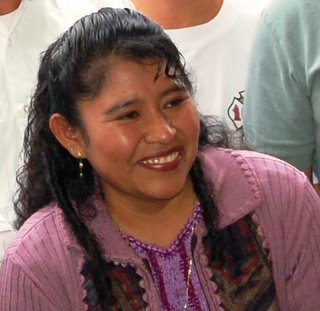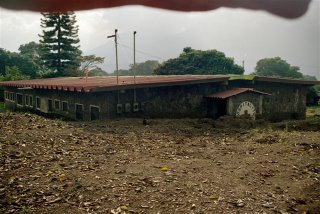
Biography of Doctora Irene Quiejú (For Press Releases)
This Fall Dr. Irene Quiejú is coming to the north-east U.S. to talk about the mudslide that devastated her home town, Santiago Atitlán. The mud buried hundreds of her neighbors alive and inundated the Hospital Atitlán in Panabaj during hurricane Stan last fall.
Dr. Quiejú is the Director of the Hospitalito Atitlán, which is now open in a temporary facility — a backpacker’s hotel that was converted during the immediate aftermath of the disaster. The Hospitalito performed its first emergency surgery in the facility just 15 days after the mud took the original building. Dr. Quiejú is the first indigenous female physician from the town of 40,000.
She was born in the T’zutujil Mayan capital, Santiago Atitlán, on the southern shore of Lake Atitlán in the Guatemalan Highlands. Her parents had 12 children, but only six survived their infancy.
When she was a little girl, she was in charge of the “medicina,” which was a mix of lime juice and salt that she concocted to “cure” her unwilling cousins. Her sister is a midwife, and when Irene was small she was awed by the miracles Lucia preformed at the former Santiaguito Clinic.
Dr. Quiejú overcame many obstacles on her way to realizing her dream of becoming a doctor. She was subjected to racial slurs and harassment throughout her college years. “People marginalize you for your clothes, your language and your last name. For some reason people feel superior if they have a non-indigenous last name,” she said.
Despite social pressure, through three years of medical school she wore the traje — the hand embroidered blouse and skirt that are unique to her village. When lectures moved into a hospital environment, however, she had to wear hospital scrubs.
Irene came of age during the peak of Guatemala’s civil war. Atitlán was the location of an infamous massacre in 1990. The military had established a base on the road to Panabaj and the hospital. Patients and physicians were uncomfortable with its proximity. The “Massacre of Santiago Atitlán” occurred in front of the military base and International Human Rights groups flocked to the area. President Cerezo immediately ordered the base closed and the military out of Atitlán.
The Hospitalito Remained closed for 15 years. It re-opened in April of last year, only to fall victim to the mud that October. K'aslimaal, the board that runs the Hospitalito, has purchased land to begin the construction of a new permanent medical facility in a location deemed safe from further mudslides. The architectual plans have been drawn, and the process of raising money to fund construction is under way.








